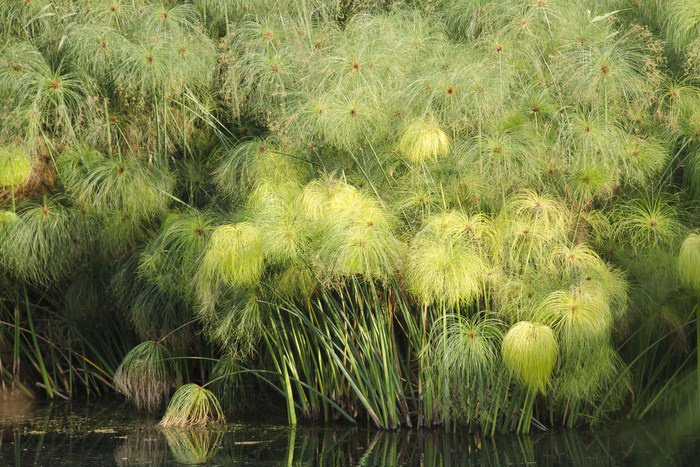Gardening: Splashing out on plants

PHUKET: Some time ago I encountered a stranger in a bar – as one does in Phuket – who was engaged in a project crafting massive, textured, handmade ceramic pots in his Chiang Mai atelier.
Encouraged by his enthusiasm, I responded by writing two pieces about suitable big plants for big pots. One, about aquatic plants, featured water lilies (nymphaeas) and lotuses, and made the point – relevant to our friend and his potential customers – that these related plants actually need very different artificial environments in order to thrive.
Nymphaeas, as owners of fish ponds will know, possess floating pads which spread quickly across any watery surface, so they need a wide, dish-shaped, relatively shallow container.
Lotuses (nelumbo nucifera), however are a different story with their huge parasol-like leaves and dramatic flowers held high above the confines of the pot’s rim.
Ideally, they look best in slender vases or in water jars with narrow necks. Since they grow naturally in shallow and murky waters, they appreciate a good layer of slimy mud which they can explore with their extensive root systems. In fact one of the reasons why they are so revered (they are the national flower of India) is because of their obvious symbolism: they signify how beauty and purity can spring from the most unpromising origins. They are central to Buddhist iconography.
In botanical terms, the lotus is an herbaceous perennial which can live for several years in a container, so it is an excellent choice for a terrace, balcony or patio. Provided it gets full sun and an occasional feed with a tablet or two, it will display these wondrous blooms in red, pink or white. Beginning life as huge, heart-shaped buds, these fragrant, peony-like flowers open in the morning before losing their petals in the late afternoon. Beauty is sometimes ephemeral.
The easiest way to own a lotus is by buying one in a plastic pot from a nursery, preferably with a bud or two, and transferring it, complete with an extra bag of mud – available at the same venue – to a larger container. It will take time to acclimatize, but should adapt to its new environment without difficulty.
You can also grow a new lotus from a piece of tuber. Place the tuber in a bowl of water, out of direct sunlight. Once it sprouts, plant it horizontally just beneath the muddy surface in a larger bowl and after a few days, immerse this in your chosen container. New lotuses can even be grown from seeds placed in a glass of water. They should sink and sprout after a week or two. Once the seedlings are six inches tall, transfer them gently to a plastic pot half filled with dense soil or mud and press them into the mixture. Then lower them into your vase.
If water lilies and lotuses are the exotics of the aquatic kingdom, there are plenty of other species you can add to your patio collection. Indeed, such an assortment has one inestimable advantage: in these dog days of unremitting sun, they will continue to thrive; the occasional watery top-up their sole requirement. Even if the water becomes tepid, they will not complain.
Let’s add two more plants to this growing collection. One, thalia geniculata or water canna, will provide a dramatic contrast to our lilies by virtue of its distinctive ovate, pale green leaves and long, woody stems which rise up to six feet above the water. Purple flowers appear in dangling clusters at the end of these stalks. It is also low maintenance, does well in a relatively slender container and seems to go on forever and ever. It will only look unsightly if you fail to cut back yellow or dead stems and leaves.
A good specimen to round out our quartet is cyperus, an ornamental plant which will again provide plenty of height and textural variety. It grows about a meter tall with it stalks topped by attractive circular clusters of bright green, grassy leaves. A larger variety, cyperus papyrus, which hails from the Nile, has feathery drooping foliage, is more vigorous and is thus better in a pond or at the margins of an
expanse of water – as the parents of Moses knew.
All these are sound choices for the pot-bound gardener with a sunny balcony: all are readily propagated by root division and all are easily maintained with minimum fuss. Choose some of those attractive pots and Bob’s your uncle… a balcony garden with a difference.
If you have a question or a garden that you would like featured, send an e-mail to Patrick at: drpaccampbell@gmail.com. Further information about this gardening series and Patrick’s other work can be viewed at: patrickaccampbell.wordpress.com
— Patrick Campbell
Latest Thailand News
Follow The Thaiger on Google News:


























